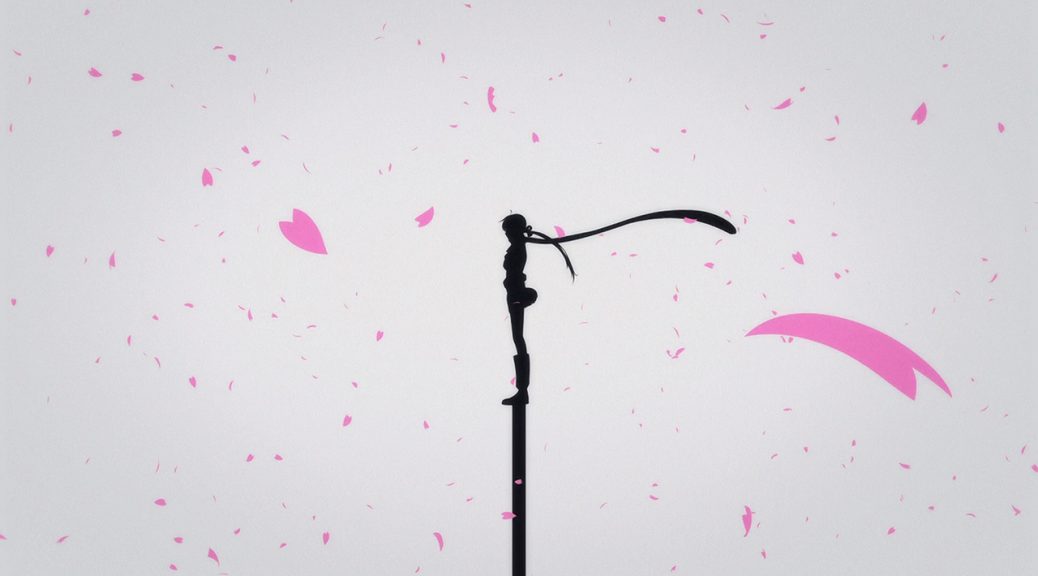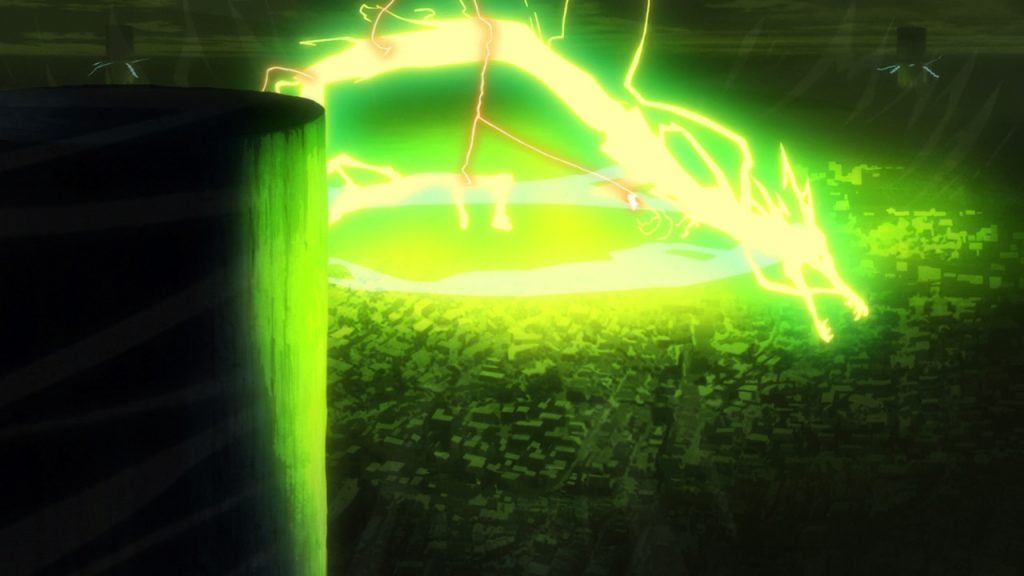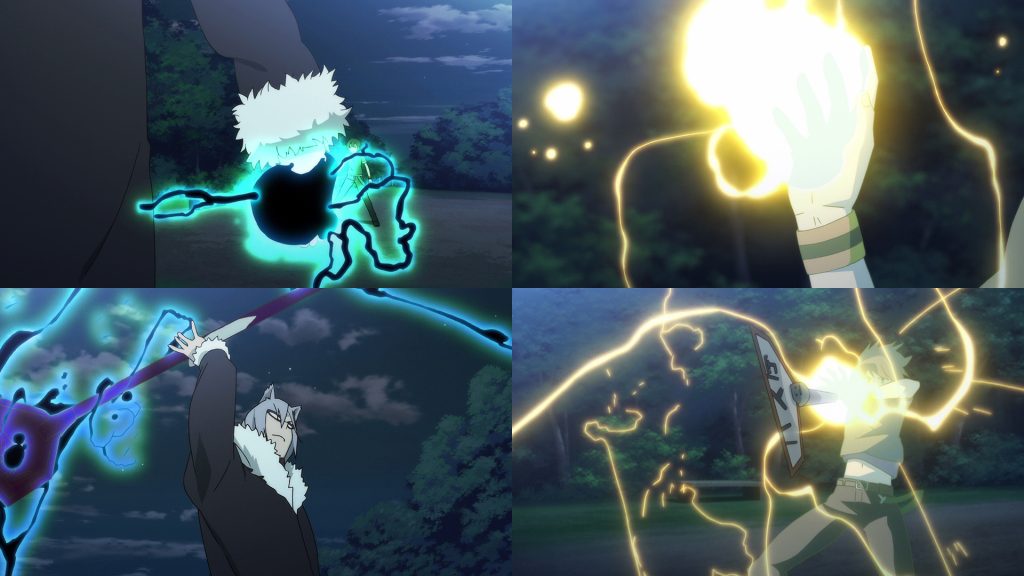
Yozakura Quartet: Worldbuilding Through Animation
Ryochimo’s take on Yozakura Quartet has always been something of a polarising topic. Beginning with the release of the Hoshi no Umi OVAs, its leap onto TV with Hana no Uta served to jumpstart arguments in regards to its worth as an animation spectacle. It’s the same formulaic clash of mindsets you’ve probably witnessed occur over much more recent shows – although it happens on a larger scale now that more and more people are taking steps to interact with this aspect of anime; one camp was unable to contain their glee over all the exciting craft crammed into almost every episode, the other kept grimacing over another show that supposedly throws all else by the wayside in an attempt to just look cool. It’s a tired argument at best, but here’s the thing: it’s one that was never relevant to Yozakura in the first place. As you’ll see through this post, it’s hard to argue about this show’s animation being a superficial addition when it’s one of the most interesting means to portray the nature of its world’s magic. It’s not as if this is One Punch Man, folks!
I’ve touched upon the topic of animation extending beyond its misconstrued flair purposes before. Its incorporation as a core tool of the narrative was the very first thing I wrote about for this site, so it’s only fitting that I come back to it almost a year later. Strict storytelling isn’t the focus this time, though. Instead, I want to turn your attention to how Ryochimo took an already established world and helped build upon it further through his distinctive digital approach.
A focal point in Yozakura is the sheer diversity present in Sakurashin. It’s a melting pot of humans and various youkai living together in harmony, seen as a haven for the latter due to the oppression they faced outwith the town. By all rights they’re a rarity within the world at large, but the opposite proves true in this isolated town. Comparisons can already be drawn between them and the prominence of digital animation at the time – more specifically, the neo webgenWebgen (web系): Popular term to refer to the mostly young digital animators that have been joining the professional anime industry as of late; their most notable artists started off gaining attention through gifs and fanmade animations online, hence web generation. It encompasses various waves of artists at this point so it's hardly one generation anymore, but the term has stuck. style we love to talk about on this site. An approach that was only ever featured sporadically in anime became the norm for Yozakura, made all the more appropriate by Hana no Uta’s first episode featuring entirely digital key animationKey Animation (原画, genga): These artists draw the pivotal moments within the animation, basically defining the motion without actually completing the cut. The anime industry is known for allowing these individual artists lots of room to express their own style.. In an industry where a lack of cohesiveness between a show’s premiere and the episodes that follow stands out as a major issue, Hana no Uta’s direction – taking what they had established with the Hoshi no Umi OVAs and building upon that – was made clear at the very outset. Safe to say they pushed through with it right to the very end!
I’d hate to draw comparisons without clear examples, but fortunately Yozakura provides them with ease. With all sorts of youkai comes all sorts of powers, and there’s care taken to make each species’ particularities look and feel unique. FXFX: Shorthand for effects animation – water, fire, beams, that kind of cut. A pillar of Japanese 2D animation. animation comes into play as a major star of the series here, with a wide array of approaches incorporated into how each power works. Not only does Ao’s Satellite involve shooting a pretty beam into the sky, the loss of detail and outlines in her hair upon use of it makes it reminiscent of the kind of fire animation you would see from many of the webgenWebgen (web系): Popular term to refer to the mostly young digital animators that have been joining the professional anime industry as of late; their most notable artists started off gaining attention through gifs and fanmade animations online, hence web generation. It encompasses various waves of artists at this point so it's hardly one generation anymore, but the term has stuck. animators on the show. More physical youkai, like the oni siblings Kyousuke and Touka, have their brute strength reflected within the damage it causes to whatever’s on the receiving end of it, including the landscape itself. The series is generally unconcerd with weight, but whenever these two get serious the sense of impact is always impressive.
When it comes to regular youkai though, none stand out more than Hime, the ass-kicking ramen-eating Dragon-Lance-wielding FX-spammer herself. It speaks volumes that her ultimate trump card is a lance made entirely out of effects, but its spectacular presence is what makes it feels so special despite how little we actually get to see it. I feel no shame whatsoever in claiming that Ikuo Geso’s portrayal of her first time using it was as cathartic an experience as they come, mainly because I still remember that rush of excitement I felt watching it unfold to this day. The lightning spewing forth as she takes hold of it and proceeds to nuke some poor lizard, that foot stomp, the lead up to a beautiful burst of FXFX: Shorthand for effects animation – water, fire, beams, that kind of cut. A pillar of Japanese 2D animation. underscored by an ever so appropriate Kanada Dragon.
This isn’t just an attempt to make a scene look cool – but my god does it ever – it’s also methodically planned so that the viewer feels just how overwhelmingly powerful Hime is, all while depicting a power that is clearly different in nature to everyone else’s. Action anime that relies heavily on effects can quickly devolve into beamspam indistinguishable beyond different colors and the names of the techniques, but Yozakura carefully portrays everyone’s skills in notoriously different ways.
So far I’ve only talked about the youkai present in Sakurashin, but they’re not the only ones worth looking at in the context of this post. Two other groups also receive the same treatment they do in regards to their power, one of which is the Hiizumi clan. This clan, which both Akina and antagonist Enjin belong to, posseses two distinct abilities: the branch Akina belongs to has the ability to tune things, effectively sending them to the realm where youkai originally belong, while the branch Enjin belongs to has the ability to strike, summoning things from said realm.
A conscious decision is made to ensure that there’s an inherent difference to how these powers are portrayed following that logic. Tuning has its roots within the human world, and thus the lightning that portrays it is much more in line with other powers we see throughout the series. While it can be destructive in its own right, it’s rarely ever presented as menacing – solemn and powerful yes, but never intrinsically dangerous. Striking, on the other hand, is shown to be an anomaly the moment it makes its appearance. Aside from the colour contrast in comparison to tuning, the thicker and warped lightning acts as a warning sign that, in a town full of beings with incredible powers, this is something genuinely out of the ordinary.
Perhaps the best part about the portrayal of these two distinct abilities though is the care taken to remind us that, ultimately, they both represent two sides of the same coin. Both originated from the same clan, and thus the similarities between them end up just as noticeable as the differences; their link is shown through the shared shapes and form, their opposed nature through the colors and lighting. While we are explicitly told this within the story itself, the attention to detail and conservation of narrative and visual cohesion is still significant in its own right.
Does the series value subtle details like this over big, flashy theatrics then? Absolutely not. Yozakura is unashamedly a flashy – and Adobe Flash-y – action spectacle. Its main cast is populated by half-youkai, the obscenely powerful end result of successfully tuning humans that have been struck hard enough. The circumstances required for them to come about also make them a scarce existence within the world of Yozakura, but it’s also for that reason that they’re lauded as ridiculously overpowered under specific conditions. Subtlety’s overrated in this scenario, as Ryochimo and his crew proved best through Kotoha; her Powerspeaker ability takes centre stage in the very first cut of Hana no Uta, wasting no time in characterising the materialisation process of her summoning through webgenWebgen (web系): Popular term to refer to the mostly young digital animators that have been joining the professional anime industry as of late; their most notable artists started off gaining attention through gifs and fanmade animations online, hence web generation. It encompasses various waves of artists at this point so it's hardly one generation anymore, but the term has stuck. school lightning.
Do remember that one of the primary focuses is making each species’ power feel unique, though. Any old lightning FXFX: Shorthand for effects animation – water, fire, beams, that kind of cut. A pillar of Japanese 2D animation. won’t do here. It has to be more stylised. It has to be Kutsuna lightning. Kenichi Kutsuna’s lack of involvement in the series despite being one of the leading influencers of the webgenWebgen (web系): Popular term to refer to the mostly young digital animators that have been joining the professional anime industry as of late; their most notable artists started off gaining attention through gifs and fanmade animations online, hence web generation. It encompasses various waves of artists at this point so it's hardly one generation anymore, but the term has stuck. movement is unfortunate, but at the very least the spirit of his work is tied to it thanks to his particular style becoming synonymous with one of its characters. It only gets better when she summons a railway gun, because of course she does.
An interesting tidbit here is that this was a decision made for Hana no Uta and onward. Her ability and lightning still go hand in hand for the initial Hoshi no Umi OVAs, just not quite as stylised. If anything it feels like further proof that one of the mindsets going into Hana no Uta was to develop those initial ideas, but at the same time it’s also understandable that they hadn’t come up with subtler ways to make her stand out when Hoshi no Umi contains her titanic clash with fellow half-youkai Zakuro. Shingo Yamashita pulls out every stop to communicate both the sheer scale of this fight and how absurd the two participants in it are. Both Zakuro’s colossal golem and Kotoha’s array of creative weaponry alone tell the story as it is, but it’s by Yama’s hand that we come to understand just why these two – and half-youkai in general – are such a rarity in the first place. His presence dominates the set piece; not just through the littering of his dynamic action and idiosyncratic FXFX: Shorthand for effects animation – water, fire, beams, that kind of cut. A pillar of Japanese 2D animation. throughout it, but right down to the colour palette itself, evoking the notion that they belong in a different world entirely.
The iconic status of this scene also makes it the poster-child for claims that the series is all flash and no substance, but in reality said flash is the substance. Half-youkai are absolutely mental even amongst their already impressive peers, and there was never a better way to encompass that than this scene.
If I were to liken Yozakura to something more recent, Mob Psycho 100 would be my choice. Both share the philosophy of animation as something woven into the core of the work itself, but also allowed to stand on its own if need be. They also serve as a counterpoint to the often seen claim that it’s just animation, but also the misguided view that it stands above all else; it’s neither just animation nor all animation. I didn’t stick around long for Mob because it simply didn’t capture me, while Yozakura remains one of my favourites to this day. In a medium where animation acts as one of the foundations, viewing it simply as some binary good or bad tool feels like a misguided attitude at best. The magic happens when it comes together with all the other key ingredients. That’s why the shows people tend to like most also happen to be known for their visuals more often than not, because there’s a conscious decision to have them resonate with everything else. If there’s one thing I want to get across more than anything else in this post, it’s this:
Kid, that’s why I like quartet.
Support us on Patreon so that we can keep producing all this content and fullfill our next goals, as well as affording all server expenses. Those who contribute $20 a month or more will also be able to suggest some titles for us to extensively talk about like this. Thanks!


I LOVE Yozakura’s animation! Enjoyed reading, thanks for writing!
Thanks! Bringing myself to write about it finally felt rewarding simply by virtue of how much I like the series. Just a shame we probably won’t ever see more of it ;_;
Why won’t we see more of it? There are already two TV series and two OVAs. We might see more YZQ anime if only the manga would hurry up the plot and not get bogged down in boring philosophical talk.
I liked YZQ a lot too. The diversity among the (half-)youkai cast is really cool, and it’s nice to see them get along so well (except Enjin, but his underlings are usually befriended quickly). Too bad about the ecchi stuff and groping though. It really detracts from an otherwise great story.
Can’t say much about yzq in general, but the odds of more Chimoket don’t seem too high considering he’s shifted his focus to 3DCG work.
Other than Mob and Space Dandy, Yozakura Quartet is probably the best looking and most visually exciting thing I’ve ever watched. I certainly enjoyed my time with it. It’s hard to really pick a single person, but I’m also inclined to call Shingo Yamashita my favorite animator alongside Kameda, personally. Thanks for writing about this show! It’d be great if more people checked it out. 🙂
Just for clarification, since I’ve heard conflicting reports, was this show entirely digital? I thought so, but a couple of people seemed to think not.
I know you more or less hinted at that at the beginning there, but I couldn’t tell for sure…
It’s not fully digital, just majorly. If they made more of it, they migth actually manage to drop analog craft entirely nowadays.
my god; you dont know how much of this anime i need in my life; yozakura quartet is one of my favorite action anime and i would really love if they could do an anime adaptation of the oni tale and kotodama arcs; especially the kotodama arc. Ryochimo’s portrayal of nuance and detail through spectacle would make those arcs would a killer anime experience. But like you said, it’s more likely that we wont get any more quartet and that makes me a saaaaaad panda.